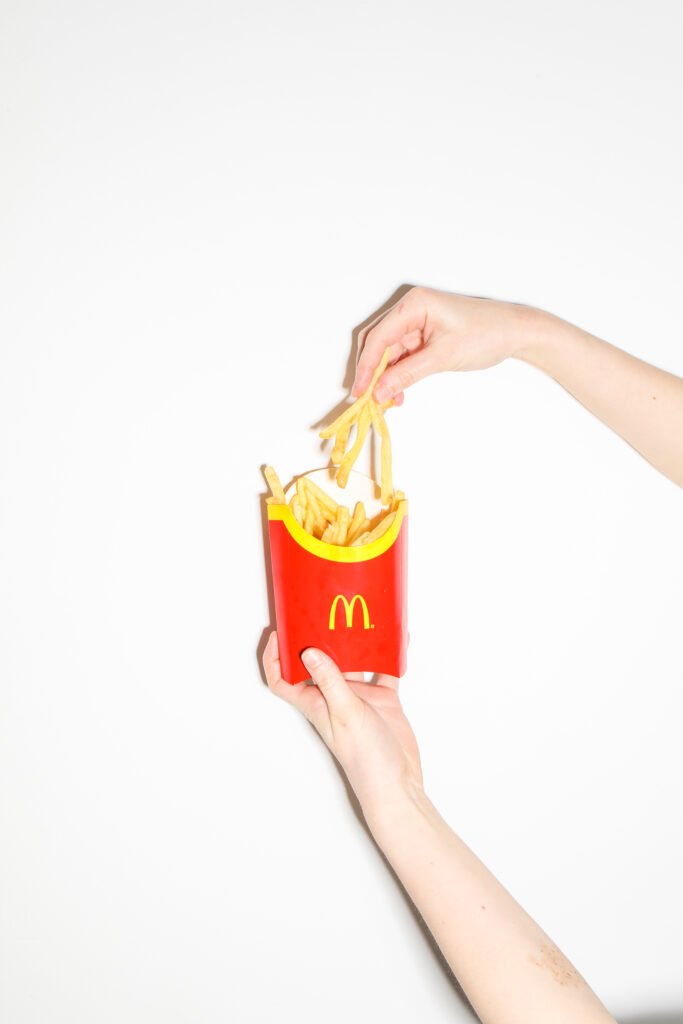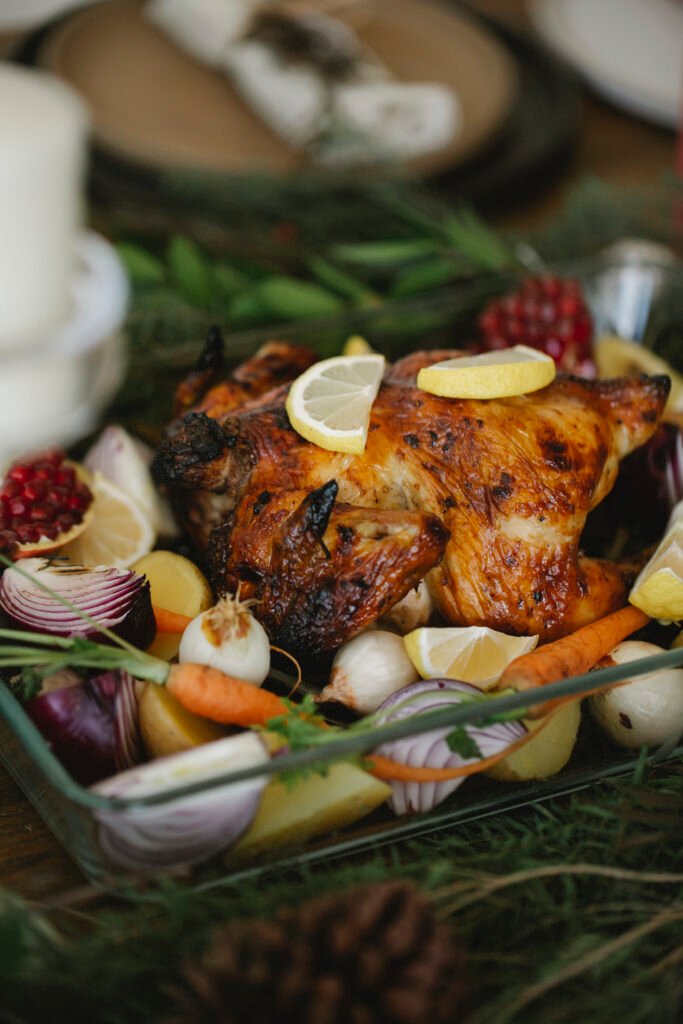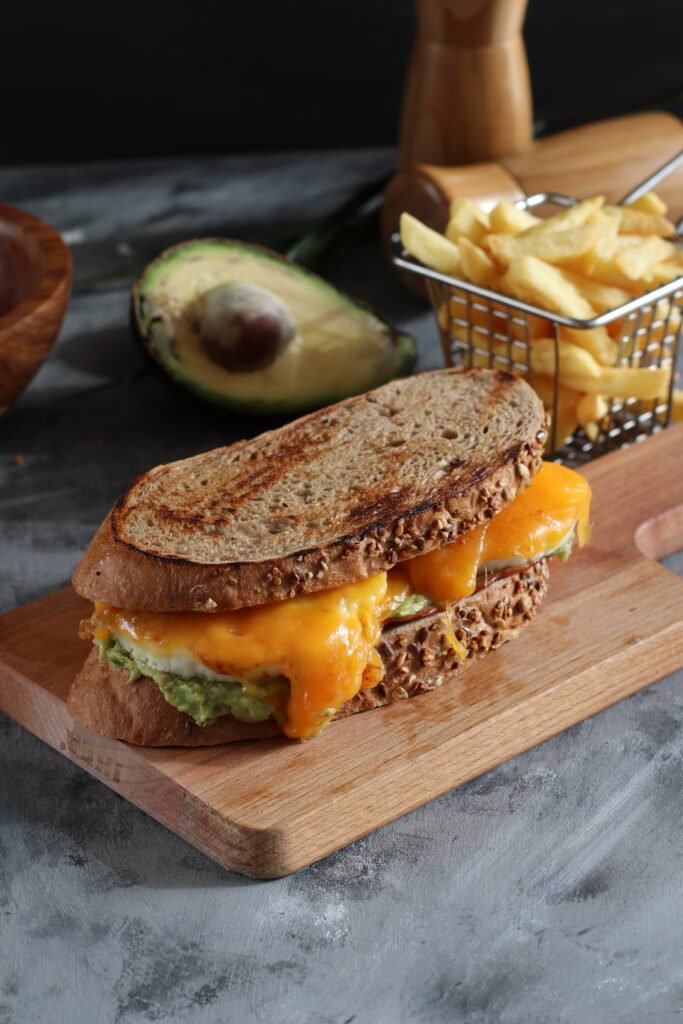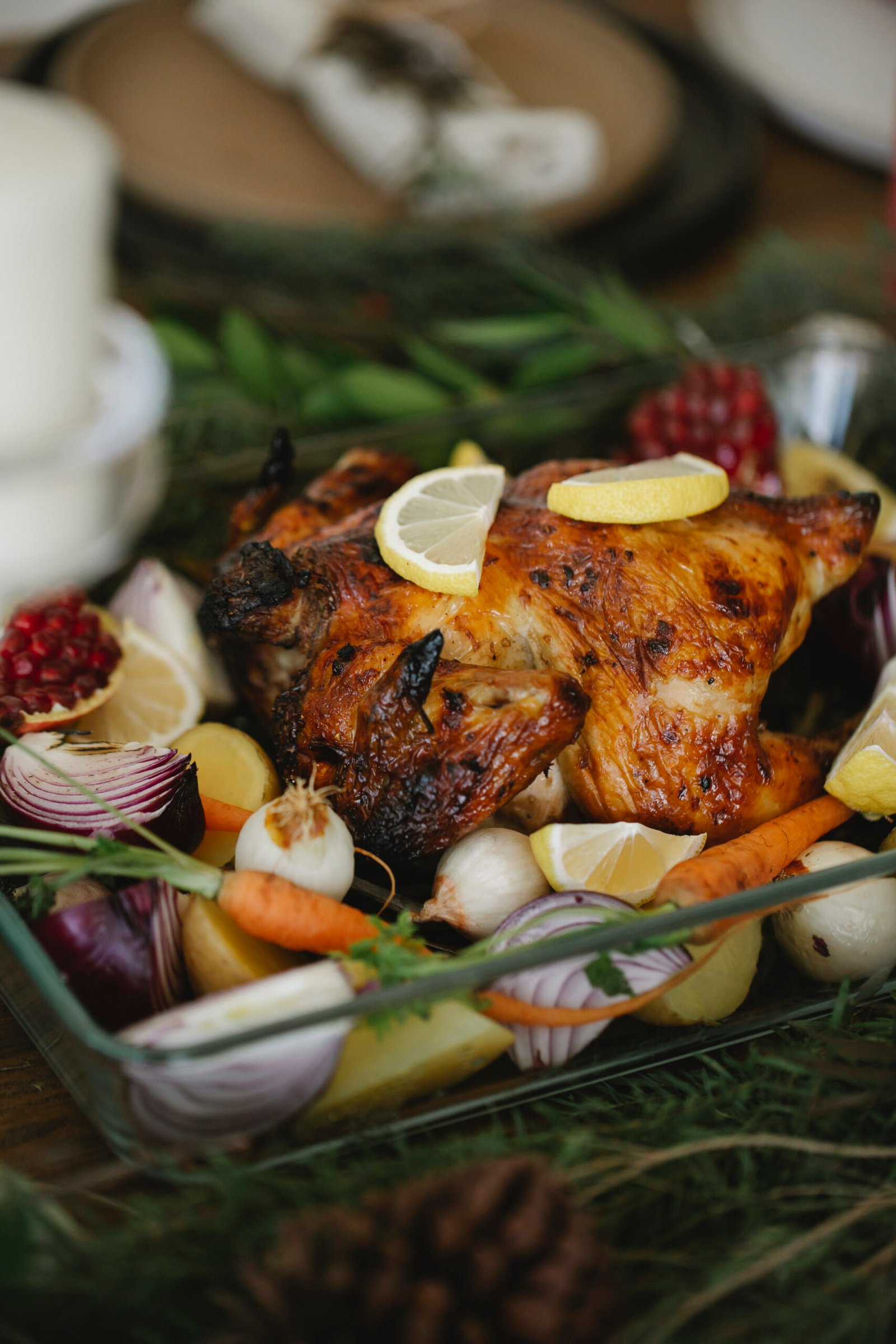Potatoes are a versatile staple in many cuisines, but it can be overwhelming to navigate the various types and cooking methods available. Whether you’re a seasoned chef or a beginner in the kitchen, this article will guide you on how to confidently select the perfect potato, master the art of peeling, and cook them to perfection. From waxy to starchy varieties, you’ll discover tips and tricks that will leave you with deliciously cooked, fluffy potatoes every time. So roll up your sleeves, sharpen your peeler, and get ready to elevate your potato game!
Selection of Potatoes
Potatoes are one of the most versatile ingredients in the culinary world. They can be prepared in a variety of ways and paired with different flavors to create delicious dishes. However, with so many potato varieties to choose from, it can be overwhelming to know which one is the best for your needs. In this article, we will guide you through the selection, peeling, and cooking processes for different types of potatoes. So, let’s dive in and discover the wonderful world of potatoes together!
Choosing the Right Potato Variety
The first step in preparing any potato dish is to choose the right potato variety. Not all potatoes are created equal, and the type of potato you select will greatly impact the texture and flavor of your final dish. Some common potato varieties you may come across include Russet, Yukon Gold, Red, Fingerling, Purple, and Petite potatoes. Each variety has its own unique characteristics, so it’s important to consider the purpose of your dish and the desired outcome when making your selection.
Examining the Potatoes
Once you’ve narrowed down your potato options to the varieties that best suit your needs, it’s time to examine the potatoes themselves. Look for potatoes that are firm to the touch and free from any soft spots or blemishes. A smooth and even skin is a good indication that the potato is fresh and of high quality. Avoid potatoes that have sprouted, as this is a sign of aging. Additionally, check for any signs of decay or mold, as these potatoes should be discarded.
Considering the Purpose
When selecting a potato variety, it’s essential to consider the purpose of your dish. Different types of potatoes have different textures and starch levels, which make them more suitable for specific cooking methods. For example, Russet potatoes are ideal for baking, while Yukon Gold potatoes are great for mashing. Red potatoes work well in salads, and Fingerling potatoes are perfect for roasting. By understanding the best uses for each potato variety, you can ensure that your dish turns out perfectly every time.
Peeling Potatoes
Peeling potatoes is an essential step for many potato dishes. While some recipes may call for leaving the skin on, there are plenty of dishes that require the potatoes to be peeled. Here are some things to consider when it comes to peeling potatoes.
Determining the Need for Peeling
Before you dive into peeling your potatoes, it’s important to determine whether or not the recipe actually calls for it. Some dishes, such as mashed potatoes or potato gnocchi, require peeled potatoes to achieve the desired texture. On the other hand, leaving the skin on can add a rustic touch and enhance the nutritional value of your dish. Ultimately, the decision to peel or not to peel comes down to personal preference and the requirements of the recipe.
Tools and Equipment for Peeling
To make the process of peeling potatoes easier, it’s helpful to have the right tools and equipment on hand. A high-quality vegetable peeler is an essential tool for every kitchen. Look for one with a sharp blade that easily glides through the potato skin. Alternatively, if you don’t have a peeler, a small paring knife can also be used to carefully remove the skin. Additionally, a sturdy cutting board will provide a stable surface for peeling your potatoes.
Peeling Techniques
When it comes to actually peeling the potatoes, there are a few techniques you can use. One common method is to start by cutting off both ends of the potato and then making a shallow cut along the circumference. This will create a guideline for peeling. Hold the potato firmly and use the peeler or paring knife to remove the skin, following the curvature of the potato. Another technique is to cut a small “X” on one end of the potato and then gently peel the skin away from the cut area. Experiment with different methods to find the one that works best for you.

Cooking Potatoes
Now that you have selected and peeled your potatoes, it’s time to move on to the cooking process. Potatoes can be prepared in a variety of ways, and each cooking method brings out different flavors and textures. Let’s explore some popular cooking techniques for potatoes.
Preparing Potatoes for Cooking
Before you start cooking your potatoes, it’s important to properly prepare them. After peeling, rinse the potatoes under cold water to remove any excess dirt or starch. If you are not cooking the potatoes immediately, you can place them in a bowl of cold water to prevent browning. It’s also a good idea to roughly cut the potatoes into uniform sizes to ensure even cooking.
Boiling Potatoes
Boiling is one of the most common methods of cooking potatoes. To boil potatoes, place them in a pot of cold, salted water. Bring the water to a boil over medium-high heat and then reduce the heat to maintain a gentle simmer. Cook the potatoes until they are fork-tender, which usually takes around 15-20 minutes, depending on the size of the potato pieces. Once cooked, drain the potatoes and they are ready to be used in various dishes such as potato salads or mashed potatoes.
Baking Potatoes
Baking potatoes is a popular method for creating tender, fluffy interiors and crispy skins. To bake potatoes, preheat your oven to around 400°F (200°C). Scrub the potatoes clean under cold water and pat them dry. Prick each potato several times with a fork to allow steam to escape during baking. Next, rub the potatoes with a little oil and sprinkle them with salt. Place the potatoes directly on the oven rack or on a baking sheet and bake for about 45-60 minutes, or until the skin is crispy and the flesh is soft when pierced with a fork. Baked potatoes can be served as a side dish or be loaded with toppings such as sour cream, bacon, and cheese for a hearty meal.
Roasting Potatoes
Roasting potatoes is an excellent way to achieve a crispy exterior and a creamy interior. Start by preheating your oven to 425°F (220°C) and prepare a baking sheet by lining it with parchment paper or aluminum foil. Cut the potatoes into bite-sized pieces and toss them in a bowl with olive oil, salt, and any desired herbs or spices. Spread the potatoes evenly on the prepared baking sheet, making sure they are not overcrowded. Roast the potatoes for about 30-40 minutes, or until they are golden brown and crispy on the outside. Roasted potatoes are a delicious side dish and can be seasoned to your liking.
Mashing Potatoes
Mashed potatoes are a classic comfort food that pairs well with a variety of main courses. To make mashed potatoes, start by boiling peeled and cut potatoes in salted water until they are tender. Drain the potatoes and return them to the pot. Add butter, milk, salt, and pepper to taste. Mash the potatoes using a potato masher or a handheld mixer until they reach your desired consistency. For creamier mashed potatoes, add more milk or cream. Mashed potatoes are a versatile side dish that can be enjoyed on their own or served alongside roasted meats or stews.
Stir-Frying Potatoes
Stir-frying is a quick and flavorful way to cook potatoes. Start by cutting the potatoes into thin, uniform slices or small cubes. Heat a tablespoon of oil in a wok or a large skillet over high heat. Add the potatoes to the hot oil and stir-fry them for about 4-6 minutes, or until they are golden brown and crispy on the outside, and tender on the inside. Season the stir-fried potatoes with salt, pepper, and any desired spices. Stir-fried potatoes can be enjoyed as a side dish or added to stir-fries and other vegetable dishes.
Grilling Potatoes
Grilled potatoes are a fantastic addition to any barbecue or outdoor gathering. To grill potatoes, start by preheating your grill to medium heat. Slice the potatoes into thin rounds or cut them into wedges. Toss the potatoes in olive oil, salt, and any desired herbs or spices. Place the potatoes directly on the grill grates and cook for about 10-15 minutes, flipping halfway through, until they are tender and crispy around the edges. Grilled potatoes can serve as a delicious side dish or be transformed into tasty potato salads and other grilled vegetable medleys.
Microwaving Potatoes
When you’re pressed for time or looking for a quick and easy option, microwaving potatoes can be a convenient cooking method. Start by scrubbing the potatoes clean and patting them dry. Pierce each potato several times with a fork to create steam vents. Place the potatoes on a microwave-safe plate and microwave them on high for about 5-7 minutes per potato, turning halfway through. The cooking time will vary depending on the size and type of potato, so it’s best to check for doneness by inserting a fork into the thickest part of the potato. Microwaved potatoes can be enjoyed as a simple side dish or used as a base for creating loaded baked potatoes.
Deep Frying Potatoes
If you’re in the mood for indulgence and crave crispy, golden potato delights, deep frying is the way to go. To deep fry potatoes, start by peeling and cutting them into your desired shape, such as french fries or potato chips. Place the cut potatoes in a bowl of cold water and let them soak for about 30 minutes to remove excess starch. Drain the potatoes and pat them dry using a kitchen towel. Heat vegetable oil in a deep fryer or a large pot to around 325°F (160°C). Carefully add the potatoes to the hot oil and fry them in small batches until they become crispy and golden brown. Transfer the fried potatoes to a paper towel-lined plate to drain any excess oil. Deep-fried potatoes make for a delectable treat and can be seasoned with salt, herbs, or spices for added flavor.
Different Types of Potatoes
Now that we have covered the selection, peeling, and cooking of potatoes in general, let’s take a closer look at some popular potato varieties and their unique characteristics.
Russet Potatoes
Russet potatoes, also known as Idaho potatoes, are one of the most widely used potato varieties. They have a russet or brown skin with a fluffy texture and a mild, earthy flavor. Russet potatoes are high in starch and low in moisture, which makes them perfect for baking, frying, and mashing. Their dry and fluffy texture allows them to absorb flavors and hold up well in dishes such as baked potatoes, french fries, and mashed potatoes.
Yukon Gold Potatoes
Yukon Gold potatoes are known for their golden-yellow flesh and thin, smooth skin. They have a buttery and rich flavor, making them perfect for mashing, roasting, or boiling. Yukon Gold potatoes have a moist and waxy texture, which helps them hold their shape when cooked. This variety is versatile and can be used in a wide range of dishes, including gratins, potato salads, and even soups, stews, and casseroles where their creamy texture adds richness.
Red Potatoes
Red potatoes are easily recognized by their smooth, red skin and creamy white flesh. They have a subtly sweet and slightly nutty flavor. Red potatoes have a waxy texture that holds up well during cooking, making them suitable for boiling, roasting, or simmering. Their firm texture makes them ideal for potato salads, stews, and dishes that require the potatoes to maintain their shape. The colorful skin of red potatoes adds a vibrant touch to any meal.
Fingerling Potatoes
Fingerling potatoes are long and slender, with a thin skin and a firm, waxy texture. They are available in different colors, ranging from yellow to red to purple. Fingerling potatoes have a unique nutty and buttery flavor that brings an elegant touch to any dish. They are best suited for roasting, grilling, or sautéing due to their ability to hold their shape. Their small size and distinct shape make fingerling potatoes a visually appealing addition to salads, side dishes, and even appetizers.
Purple Potatoes
Purple potatoes are eye-catching with their vibrant purple skin and vibrant purple flesh. They have a slightly nutty and earthy flavor, making them a versatile option for various cooking methods. Purple potatoes have a fluffy texture and retain their color when cooked, adding a visually stunning element to any dish. They can be boiled, roasted, or mashed, and their unique hue makes them perfect for creative presentations and adding a pop of color to salads, side dishes, or even desserts.
Petite Potatoes
Petite or baby potatoes are small and round, with a thin, tender skin. These bite-sized potatoes are available in various colors, including white, red, and purple. Petite potatoes have a creamy texture and a subtly sweet flavor. Due to their small size, they cook quickly and evenly, making them suitable for boiling, steaming, roasting, or even sautéing. They are a versatile choice for side dishes, salads, or even as a garnish for main courses.

Selecting Russet Potatoes
Russet potatoes are a popular choice for many potato dishes due to their fluffy texture and mild flavor. Here are some guidelines to help you select the best Russet potatoes for your culinary endeavors.
Appearance
When selecting Russet potatoes, look for ones that have a uniform light brown color. Avoid potatoes with green spots or patches, as this indicates exposure to light and can cause an undesirable bitter taste. The skin should be firm and free from any blemishes or wrinkles. Additionally, opt for larger Russet potatoes, as they tend to have a more fluffy texture when cooked.
Texture
Russet potatoes should have a dry and starchy texture, which is what gives them their fluffy consistency when cooked. Gently squeeze the potato to ensure it feels firm and not soft or spongy. A firm texture is a good indication that the potato is fresh and will yield the desired results in your dish.
Best Uses
Russet potatoes are best suited for baking, frying, and mashing. Their dry and fluffy texture makes them ideal for baking potatoes in the oven until they have a crispy skin and a light, fluffy interior. Russet potatoes are also perfect for making french fries, as they absorb less oil due to their high starch content. Lastly, their excellent mashing capabilities make them the go-to choice for creamy mashed potatoes. When cooked, Russet potatoes break down easily, resulting in a smooth and velvety consistency.
Selecting Yukon Gold Potatoes
Yukon Gold potatoes are beloved for their rich, buttery flavor and creamy texture. Here’s what to look for when choosing Yukon Gold potatoes for your next dish.
Appearance
Yukon Gold potatoes should have smooth, golden-yellow skin that is free from any blemishes or discoloration. The skin should feel firm and be easily brushed clean, giving off a shiny appearance. Avoid potatoes with sprouts, as this is an indication of aging and may affect the flavor and texture.
Texture
Unlike Russet potatoes, Yukon Gold potatoes have a moist and waxy texture. When selecting, gently squeeze the potato to ensure it feels slightly firm without any sponginess. The creamy texture is what sets Yukon Gold potatoes apart and makes them a great choice for mashing and roasting.
Best Uses
Yukon Gold potatoes shine in recipes that call for mashing or boiling. Due to their naturally buttery flavor, they create incredibly creamy and flavorful mashed potatoes. Additionally, their thin, smooth skin makes them perfect for boiling, as they hold their shape well and absorb flavors nicely. Yukon Gold potatoes can also be roasted, bringing out their rich, buttery taste and creating crisp edges. Their versatility allows them to be used in various dishes, such as gratins, casseroles, and even soups.

Selecting Red Potatoes
Red potatoes are known for their vibrant skin and creamy white flesh. Here’s what to look for when selecting the perfect red potatoes for your culinary creations.
Appearance
When choosing red potatoes, look for ones with bright, smooth, and unblemished skin. The skin should be vibrant red in color and free from any green spots or patches. Avoid potatoes with wrinkled or shriveled skin, as this is a sign of aging. Additionally, check for any soft spots or mushy areas, as these potatoes should be discarded.
Texture
Red potatoes have a firm, waxy texture that holds up well during cooking. When selecting, gently squeeze the potato to ensure it feels firm without any sponginess. A firm texture is indicative of a fresh and flavorful red potato.
Best Uses
Red potatoes are versatile and well-suited for a variety of cooking methods. They shine in recipes that call for boiling, simmering, or roasting, as their waxy texture allows them to hold their shape and retain their vibrant color. Their firm texture makes them perfect for use in potato salads, stews, or any dish that requires the potatoes to maintain their form. Red potatoes also work well in oven-roasted recipes, adding a pop of color and a creamy bite.
Selecting Fingerling Potatoes
Fingerling potatoes are small and elongated, often available in different colors. Here’s what to consider when selecting fingerling potatoes for your delightful dishes.
Appearance
When choosing fingerling potatoes, look for ones with smooth, unmarred skin. The skin should have a vibrant color, whether they are yellow, red, or any other variety. Avoid fingerling potatoes with dried or wrinkled skin, as this can indicate that they are past their prime. Additionally, check for any signs of decay or mold, which should signal that the potatoes are not suitable for consumption.
Texture
Fingerling potatoes should have a firm and waxy texture. When selecting, gently squeeze the potatoes to ensure they feel firm without any sponginess. This texture allows them to retain their shape when cooked and makes them ideal for grilling, roasting, or sautéing.
Best Uses
Fingerling potatoes add a touch of elegance and sophistication to any dish. Their unique shape and vibrant colors make them perfect for showcasing in salads, side dishes, or even as a garnish. Fingerling potatoes hold up well during cooking, whether you choose to grill, roast, or sauté them. Their firm texture ensures that they remain tender on the inside while offering a slight crunch on the outside. Because of their smaller size, fingerling potatoes cook relatively quickly, making them a convenient choice for meals that require a shorter preparation time.
Selecting Purple Potatoes
Purple potatoes, with their striking appearance, are a fantastic addition to any dish. Here’s what to look for when selecting purple potatoes for your culinary creations.
Appearance
When choosing purple potatoes, look for ones with vibrant, deep purple skin. The skin should be smooth, unblemished, and free from any green spots or discoloration. Avoid potatoes with wrinkled or wilted skin, as these are signs of aging. Additionally, check for any soft spots or mold, as these potatoes should not be consumed.
Texture
Purple potatoes should have a firm texture that holds up well during cooking. Gently squeeze the potatoes to ensure they feel firm without any sponginess. A firm texture indicates that the potatoes are fresh and will deliver the desired results in your recipes.
Best Uses
Purple potatoes are not only visually stunning but also bring a unique flavor and texture to your dishes. They can be boiled, roasted, mashed, or even fried. Their fluffy texture and slightly nutty flavor make them great for mashing into vibrant purple mashed potatoes. They hold their color when cooked, adding a distinctive touch to salads and side dishes. Purple potatoes are a great way to infuse creativity and excitement into your meals.
Selecting Petite Potatoes
Petite or baby potatoes are small and round, often available in different colors. Here’s what to look for when selecting petite potatoes for your culinary masterpieces.
Appearance
When selecting petite potatoes, look for ones with smooth and unblemished skin. The skin should be vibrant, whether they are white, red, or purple potatoes. Avoid potatoes with rough or wrinkled skin, as this can indicate that they are past their prime. Additionally, check for any soft spots or mold, as these are signs that the potatoes should not be consumed.
Texture
Petite potatoes should have a tender and creamy texture. Gently squeeze the potatoes to ensure they feel firm without any sponginess. A firm texture indicates that the potatoes are fresh and will yield the desired results in your recipes.
Best Uses
Petite potatoes are an excellent addition to a wide range of dishes. They can be boiled, steamed, roasted, or even sautéed. Their small size makes them cook relatively quickly, saving you time and effort in the kitchen. Petite potatoes can be used in salads, stews, roasted vegetable medleys, or even enjoyed on their own as a flavorful side dish. With their tender texture and delicious flavor, petite potatoes are sure to impress.
In conclusion, selecting the right potato variety, peeling them, and cooking them to perfection are key steps in creating delicious and satisfying potato dishes. Whether you choose Russet potatoes for baking, Yukon Gold for mashing, Red potatoes for salads, Fingerling for roasting, Purple potatoes for vibrant creations, or Petite potatoes for their tender bite, each variety brings its own unique qualities to the table. So next time you’re at the store, take the time to give them a closer look, choose the one that best suits your needs, and unleash your creativity in the kitchen. Happy potato cooking!

